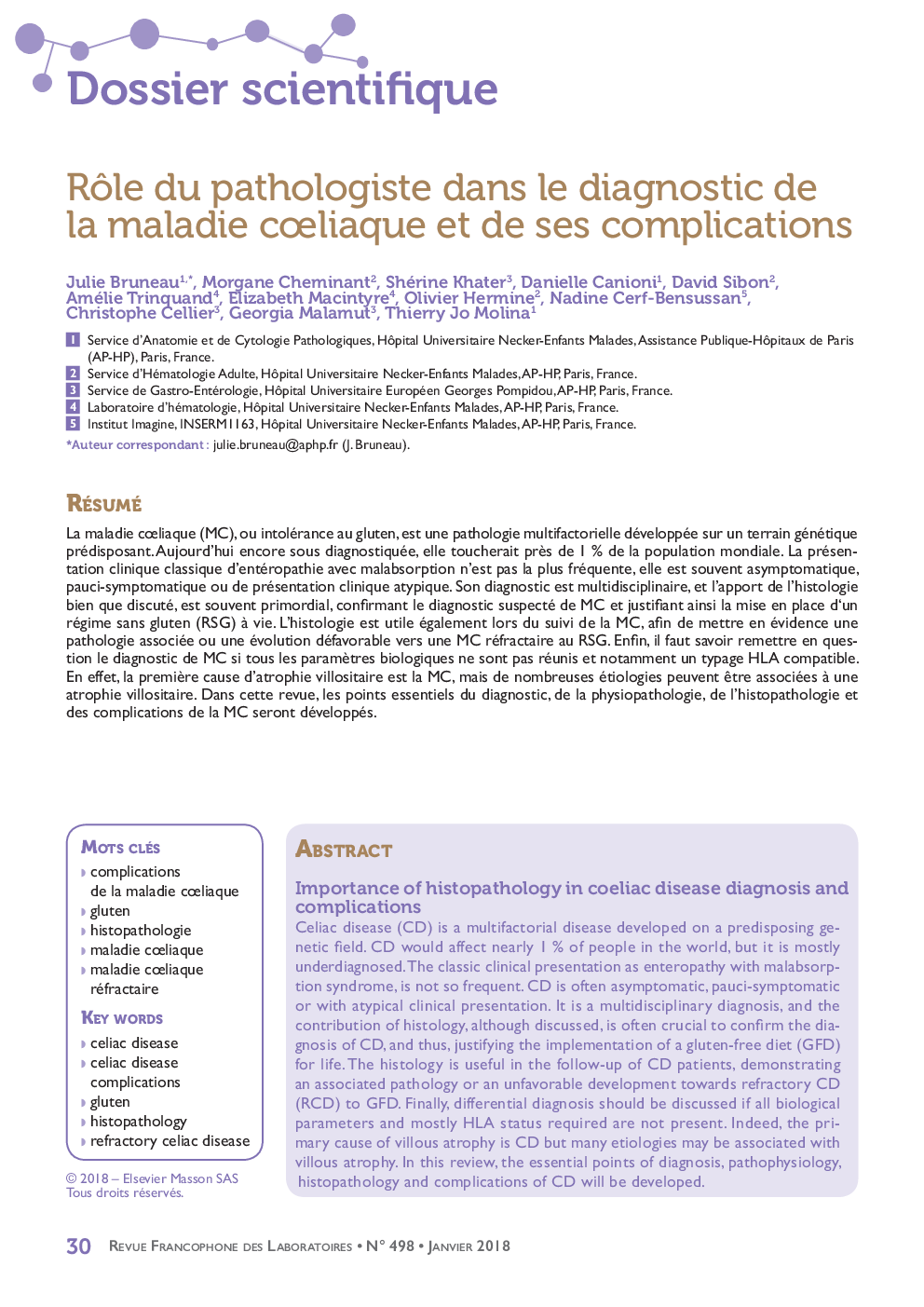| Article ID | Journal | Published Year | Pages | File Type |
|---|---|---|---|---|
| 7645142 | Revue Francophone des Laboratoires | 2018 | 9 Pages |
Abstract
Celiac disease (CD) is a multifactorial disease developed on a predisposing genetic field. CD would affect nearly 1 % of people in the world, but it is mostly underdiagnosed. The classic clinical presentation as enteropathy with malabsorption syndrome, is not so frequent. CD is often asymptomatic, pauci-symptomatic or with atypical clinical presentation. It is a multidisciplinary diagnosis, and the contribution of histology, although discussed, is often crucial to confirm the diagnosis of CD, and thus, justifying the implementation of a gluten-free diet (GFD) for life. The histology is useful in the follow-up of CD patients, demonstrating an associated pathology or an unfavorable development towards refractory CD (RCD) to GFD. Finally, differential diagnosis should be discussed if all biological parameters and mostly HLA status required are not present. Indeed, the primary cause of villous atrophy is CD but many etiologies may be associated with villous atrophy. In this review, the essential points of diagnosis, pathophysiology, histopathology and complications of CD will be developed.
Related Topics
Physical Sciences and Engineering
Chemistry
Analytical Chemistry
Authors
Julie Bruneau, Morgane Cheminant, Shérine Khater, Danielle Canioni, David Sibon, Amélie Trinquand, Elizabeth Macintyre, Olivier Hermine, Nadine Cerf-Bensussan, Christophe Cellier, Georgia Malamut, Thierry Jo Molina,
